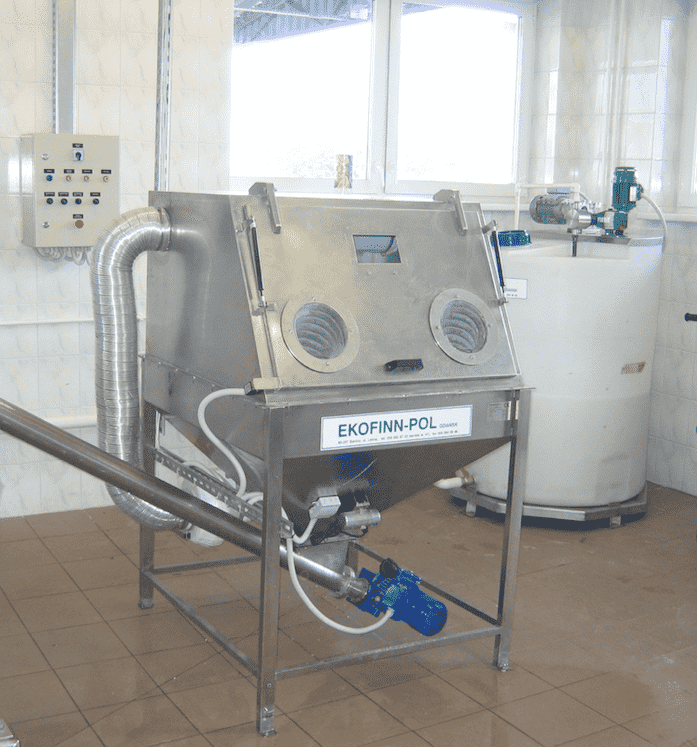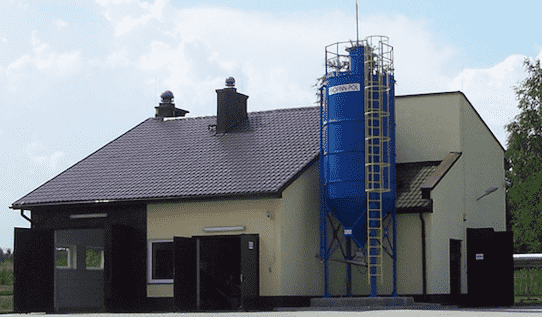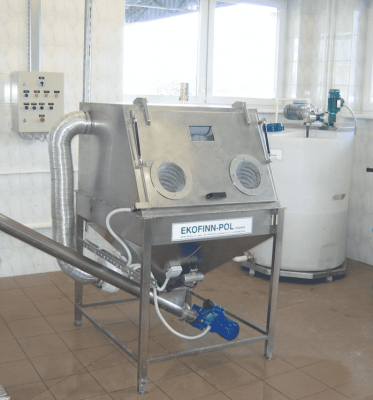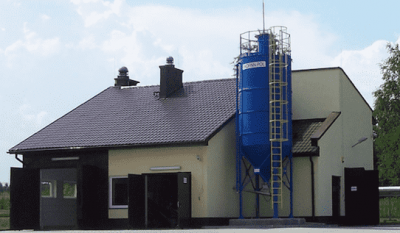Sludge hygienisation is a process of chemical stabilization and biological disintegration, taking place generally after
mixing the sludge with quicklime or hydrated lime.
We have prepared an attractive offer for our clients, allowing lime hygienisation to be effective and hassle-free. It is
a complete hygienisation process line with a silo for storing quicklime. The equipment is constructed of high-class
materials that ensure durability during a long period of operation. The line also includes lime dispensers and mixers.
We provide a large assortment of belt and screw conveyors, as well as ready-made sets for small-scale hygienisation
(so-called mini-hygienisation) with the use of bagged hydrated lime.
Stabilization of sewage sludge is necessary for its further management. The lime hygienisation method is advantageous
for practical and economic reasons. When lime is used in the technological process, the pH of the material undergoing
hygienisation becomes very high, thanks to which the sewage sludge is biologically stabilized. This allows you to
completely eliminate pathogenic bacteria, which enables storage or agricultural use of waste such as sewage sludge. With
the use of quicklime, the second hygienising factor takes place - high temperature of the mixture. Stabilized sludge can
be re-used in many sectors of the economy. Generally, it is used in agriculture, where it is employed to fertilize
agricultural fields, especially acidic soils due to the highly alkaline reaction of the mixture. It is also used for the
rehabilitation of biologically degraded land.
The correct course of sewage sludge hygienisation is based primarily on ensuring proper contact between the sludge mass
and lime. Then, in the case of quick lime, the process of slaking the lime with water contained in the sludge takes
place. Lime oxide, which is quicklime, reacts with water into lime hydroxide. It is an exothermic process that allows
the temperature of the substance to elevated up to 80 degrees Celsius. However, already at 60 degrees Celsius, as a
result of this action, the hygienisation of the sewage sludge takes place, which in combination with the second factor,
high pH (up to pH = 12), leads to the effective removal of pathogenic bacteria, parasites and their spores.
In the process of hydration, quicklime absorbs approximately 32% of water in relation to its own weight. Thanks to this,
the cake is dried and its temperature is increased at the same time. This is a very important in stabilizing the
product. The effectiveness of hygienisation is directly dependent on the selected dose of lime.



